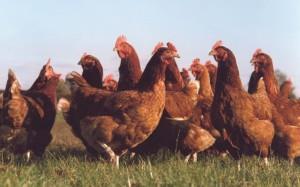Poultry has recorded strong industry performance with profitability in most regions in the world, despite ongoing global pressure of avian influenza (AI) cases, according to Rabobank’s Global Poultry Quarterly for the second quarter of 2017.

With China being the only exception, where human AI cases have kept prices down, the US has enjoyed strong recovery with export growth of 9%, while the EU is expecting “solid performance” in the second quarter, with strong demand.
Global poultry trade has grown to a record level of three million tonnes in the first quarter, 5% higher than the same period last year, despite restrictions set by many countries due to AI in exporting countries.
Industries in Mexico, India, Thailand and Japan are performing “particularly well”, according to the research, while South Africa and the EU are on the road to recovery.
Rabobank’s report highlighted that “global average prices have increased slightly, with firm competitive meat prices, while average feed prices remained stable”.
It added that the two biggest themes from a global trade perspective in this year’s first five months are an ongoing spread of AI in Europe, Asia and Africa, as well as the meat scandal in Brazil.
According to the report, these two themes continue to have a relatively strong impact on the global market.
In Brazil, where industry was hit by the meat scandal in March, exports dropped in March and April and prices are “under pressure”.
In China, human AI cases are still spreading and impacting the market, although prices have recently recovered. RaboResearch highlighted that China is “still the worst-performing industry globally”, as the closure of live bird markets had a big impact, as traditionally, 60% of Chinese supply is sold in such markets.
Looking to the future, global trade is expected to be more competitive in the coming months, according to Rabobank, as the US is likely to defend its improved market position, while Brazil is expected to try and regain markets, possibly through some price concessions.
This story was originally published on a previous version of the Meat Management website and so there may be some missing images and formatting issues.















